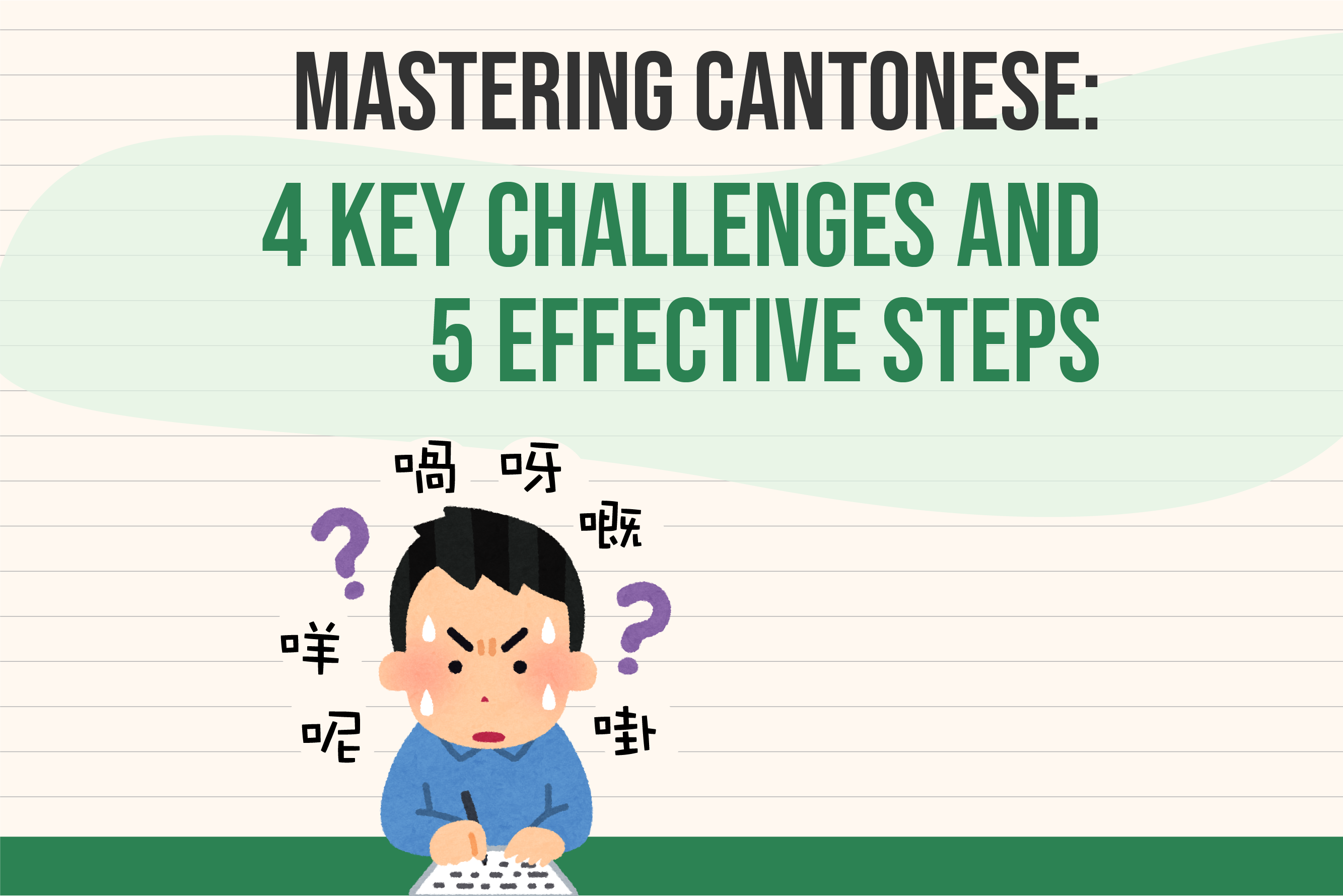Table of Content
4 Difficulties in Learning Cantonese
We get it! Tackling Cantonese, especially if you're teaching yourself, comes with its fair share of hurdles. Here’s what often trips up learners:
Limited Reading Materials
Most Chinese reading materials, such as articles, news, and novels, are in modern written Chinese. Directly using these resources can confuse the grammar and vocabulary between Mandarin and Cantonese. Relying solely on Chinese texts to learn Cantonese becomes challenging.
Curious about the differences between Modern Written Chinese and Written Vernacular Cantonese? Check out this blog for the inside scoop!: "Modern Written Chinese VS Written Vernacular Cantonese"
Desynchronization of Audio and Subtitles
When watching videos like movies, TV shows, or news broadcasts, the Cantonese spoken dialogues usually do not match the subtitles, which are typically in modern written Chinese. This practice is typically aimed at helping more Chinese speakers understand the videos. But this discrepancy makes it hard to understand the original Cantonese dialogue through subtitles and makes it difficult to look up words.
Additionally, subtitles often omit ending particles, making it not easy for beginners to grasp the use of particles through videos.

Example:
If we don't have dreams, what's the difference between us and a salted fish? | |
|---|---|
Actor's line | 做人如果冇夢想,同條鹹魚有咩分別呀? |
Subtitle | 做人如果沒有夢想,和鹹魚有什麼分別? |
-- Shaolin Soccer 《少林足球》2001
Tonal Complexity
Cantonese is a tonal language with six main tones, which can be challenging for speakers of non-tonal languages to distinguish and pronounce accurately. Since Cantonese tones are often represented by numbers, some learners find it difficult to associate these numbers with the corresponding tones.
Particle Usage
Particles play a significant role in Cantonese but are challenging for many learners. For example, 係 means yes, while 係呀, 係喎, 係咩, 係呢, 係啩, 係嘅 are all grammatically correct and are commonly used in daily life. Although grammatically correct, they have subtle differences and are contextually sensitive, posing difficulties even for advanced learners.
6 Effective Steps to Master Cantonese
Step 1 - Dive into Jyutping
If Chinese characters are a bit of a puzzle for you, starting with Jyutping is like finding a secret shortcut. It makes the beginning much smoother. But don’t stop there! To really get into the swing of Cantonese, you’ll need to pick up Chinese characters eventually.
Cantonese doesn’t have as many vowel and consonant mix-ups as English, which can make leveling up tricky if you stick only to Jyutping. Plus, with all the homophones—words that sound the same and have identical Jyutping but different characters and meanings—you might find yourself in a bit of a tangle without the characters.
Step 2 - Tuning into Tones
Those tone numbers are not just random digits—they hint at the pitch of words, from high to low, though not always strictly. They come in handy for nailing the pronunciation of new words. But here’s the scoop: most Cantonese natives don't learn and memorize the number.
Of course, learning the tones is essential, and the tone number helps to you pronounce a new word. But rather than memorizing the numbers themselves, let your ears lead the way. Bathe in the sounds of the language, repeat what you hear, eventually, you’ll be picking up tones just like a Cantonese speaker learning Mandarin—no number crunching needed.
We explain more about this approach in this blog: "The Benefits and Challenges of Learning Cantonese Through Songs, Literature, and YouTube"
Step 3 - Building Up Your Basic Vocabulary and Grammar
Already speak Mandarin? You’ve got a head start. Some of your Mandarin vocab will translate directly over to Cantonese, just with a twist in pronunciation. But watch out—prepositions and sentence structures like to play by their own rules. Learn more their differences in this blog: "Difference between Cantonese and Mandarin"
For those starting from scratch, consider learning the basics with some digital tools. Platforms like Duolingo and Cantonese101 are great, or you might even find a Cantonese teacher to guide you.
Step 4 - Exploring Cantonese Through Multimedia
Get your groove on with Cantonese songs and dive into some YouTube channels—it’s a fun way to get the hang of those tricky tones. Plus, reading materials in written vernacular Cantonese will help you master the use of ending particles and get comfortable with the grammar. If you’re a visual learner, this is your jam!
Wondering how to find these resources? Learn more about the benefits and what to watch out for when learning Cantonese through multimedia in this Blog: "The Benefits and Challenges of Learning Cantonese Through Songs, Literature, and YouTube"
Step 5 - Diving Deeper with Films and Chinese Novels
If you're up for a challenge, why not spice up your Cantonese by watching dramas or movies with subtitles in Standard Written Chinese, or dive into some Chinese novels? This method is a fantastic way to broaden your vocabulary.
Just a heads up, though—you'll want to get a good grip on the differences between Standard Written Chinese and Written Vernacular Chinese before you start. This way, you can avoid mixing up your words and grammar.
Step 6 - Practice with Native Speakers
Hands down, one of the best ways to pick up a new language! No need to jump straight into speaking; kicking things off with texting is totally cool. A lot of young folks who speak Cantonese tend to text in written vernacular Cantonese, so you'll get a genuine slice of how they chat every day.
